UAEJJFApr 19, 2016 by FloGrappling
6- vs. 10-Minute Jiu-Jitsu Matches — How Rules Affect Outcomes
6- vs. 10-Minute Jiu-Jitsu Matches — How Rules Affect Outcomes
Statistical analysis of black-belt jiu-jitsu matches held under 6-minute and 10-minute rounds reveals interesting discoveries on how rules affect outcomes.
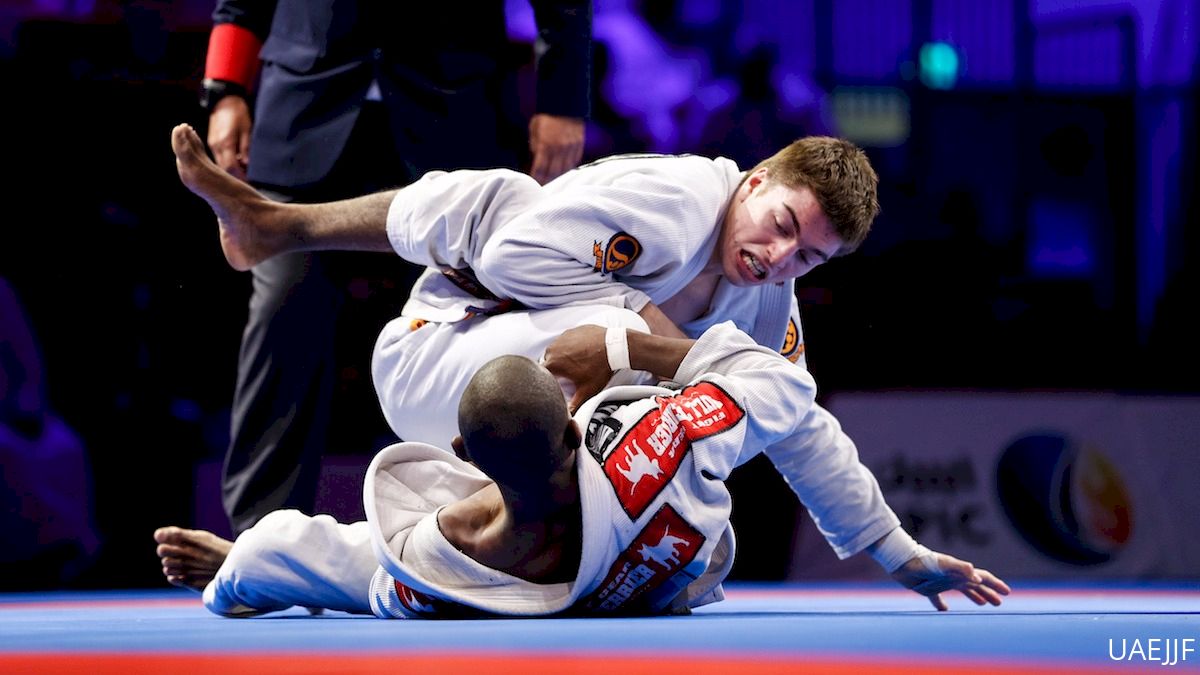
Statistical analysis of black-belt jiu-jitsu matches held under 6-minute and 10-minute rounds reveals interesting discoveries on how rules affect outcomes.
By Andre Borges
As we progress deeper into 2016’s jiu-jitsu gi season with important tournaments such as the European and Pan Championships behind us and the Abu Dhabi World Pro, Brazilian Nationals and IBJJF World Championships on the horizon, the sport’s stars look to confirm their places in the history books.
A crucial part of competitive jiu-jitsu is sound strategy, and any detail in the rule book can play a deciding role in an athlete’s performance. This is one of the reasons why United Arab Emirates Jiu-Jitsu Federation (UAEJJF) tournaments have been such a key differentiator in the sport.
By cutting the time limit of black-belt matches to six minutes, UAEJJF events have often delivered unusual and shocking upsets, but none were more shocking than last year’s World Pro female absolute semifinals match when 55kg Mackenzie Dern beat 100kg+ Gabi Garcia in arguably the biggest upset in jiu-jitsu history.
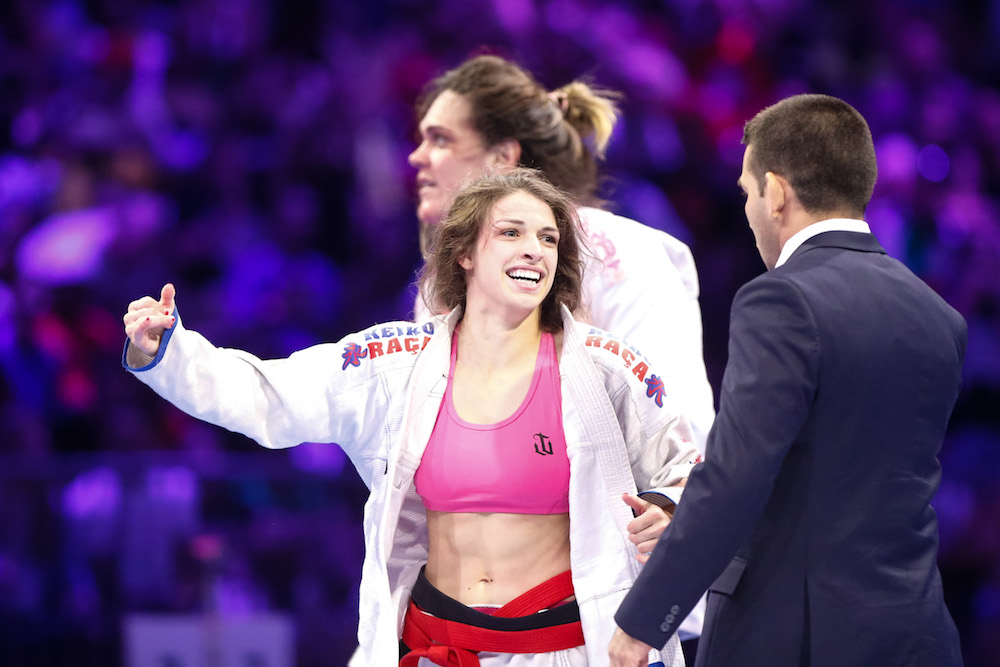
Logically, it seems shorter rounds benefit more athletic grapplers who can impose their will from the start. There is certainly a case for this assumption, particularly when looking at Bernardo Faria. The biggest name in the sport (in Buchecha’s absence), Faria is a notoriously slow starter who coincidentally has yet to earn a gold medal at the Abu Dhabi World Pro (the only big title missing in Bernardo’s six years at black belt).
Leandro Lo is another interesting case study for the UAEJJF proposal. Regarded as one of the most dynamic grapplers to have ever graced the mat, Lo seldom leaves scoreboards displaying single digit numbers by the end of his matches (he scores an average of 11 points in 10-minute matches).
The shorter rounds at World Pro, Grand Slam and other UAEJJF events have indeed provided incredible sporting moments. Lo’s breakthrough performance over Michael Langhi back in 2011; Victor Estima’s wins over Claudio Calasans and Keenan Cornelius in 2015; the epic battle between Rodolfo Vieira and Andre Galvao, and more.
But how does the UAEJJF’s proposal stack up when you compare the stats against the IBJJF's 10-minute matches?
To analyze 6-minute matches, we looked at data from the four Abu Dhabi Grand Slam events that took place from August 2015 to March 2016. This includes the Tokyo, Los Angeles, Rio de Janeiro and London Grand Slams (a total of 213 matches in adult black-belt divisions). We chose these tournaments instead of last year’s Abu Dhabi World Pro because it was the most complete information we could gather under these rules. All four of these tournaments had a similar level of talent compared to the World Pro.
We then matched the Grand Slam information against the recent 2015 IBJJF Pan-American Championship for the same reasons: clean data, caliber of athletes and number of matches.
Grand Slams
Points 39%
Advantages 18%
Submissions 34%
Decisions 9%
Total matches: 213
2016 Pan
Points 43%
Advantages 14%
Submissions 37%
Decisions 6%
Total matches: 158
Although the Grand Slam’s matches are about 40% shorter than Pan-Ams', the methods of victory did not differ tremendously. However, a higher percentage of matches were won by referee decisions and advantages.
For top submission percentages, the differences aren’t major, but there are points of interest:
Grand Slams
Choke from back 28%
Armbar 18.5%
Choke 17%
Triangle 9%
2016 Pan
Choke from back 23%
Armbar 13%
Choke 15%
Straight ankle 10%
The choke from the back is still the most utilized submission in jiu-jitsu by a large margin, regardless of time limits. But this gold standard of grappling is certainly more prominent in the Abu Dhabi Grand Slam, as is the armbar.
The most surprising difference under the 6-minute rule seems to be the absence of footlocks (which appear in much larger numbers for 10 minutes). But this could have more to do with the style of the participants, and less to do with the rules — we didn't see footlock specialists such as Luiz Panza, Renato Cardoso or Edwin Najmi at the Grand Slam, who all had solid wins at Pans. The same assumption applies to the triangle, where the Grand Slam benefited from the crafty guard work of triangle specialists such as Evandro Nunes and Isaque Paiva.
Regardless of numbers, the UAEJJF rules have certainly brought something new to the sport since the federation established the World Pro back in 2009. The event has been prolific in showcasing top talent on a huge platform. It raised the profile of Claudio Calasans and Claudio Caloquinha back in 2010, opened the eyes of the world to the talented Leandro Lo in 2011, and provided some of the most dramatic and shocking matches in recent memory. It's clear that the UAEJJF Abu Dhabi World Pro certainly deserves our attention.
Watch the 2016 Abu Dhabi World Pro here on FloGrappling!
By Andre Borges
As we progress deeper into 2016’s jiu-jitsu gi season with important tournaments such as the European and Pan Championships behind us and the Abu Dhabi World Pro, Brazilian Nationals and IBJJF World Championships on the horizon, the sport’s stars look to confirm their places in the history books.
A crucial part of competitive jiu-jitsu is sound strategy, and any detail in the rule book can play a deciding role in an athlete’s performance. This is one of the reasons why United Arab Emirates Jiu-Jitsu Federation (UAEJJF) tournaments have been such a key differentiator in the sport.
By cutting the time limit of black-belt matches to six minutes, UAEJJF events have often delivered unusual and shocking upsets, but none were more shocking than last year’s World Pro female absolute semifinals match when 55kg Mackenzie Dern beat 100kg+ Gabi Garcia in arguably the biggest upset in jiu-jitsu history.

Logically, it seems shorter rounds benefit more athletic grapplers who can impose their will from the start. There is certainly a case for this assumption, particularly when looking at Bernardo Faria. The biggest name in the sport (in Buchecha’s absence), Faria is a notoriously slow starter who coincidentally has yet to earn a gold medal at the Abu Dhabi World Pro (the only big title missing in Bernardo’s six years at black belt).
Leandro Lo is another interesting case study for the UAEJJF proposal. Regarded as one of the most dynamic grapplers to have ever graced the mat, Lo seldom leaves scoreboards displaying single digit numbers by the end of his matches (he scores an average of 11 points in 10-minute matches).
Lo’s relentless style – though still effective in 6-minute matches – does not allow for the same explosive results. But the numbers are lower than expected: His Abu Dhabi World Pro average score last year was only 3.4 points.The UAEJJF’s goal is geared toward pushing the gentle art as a legitimate sport to attract a wider audience and potentially shift the rules to a Olympic platform.
The shorter rounds at World Pro, Grand Slam and other UAEJJF events have indeed provided incredible sporting moments. Lo’s breakthrough performance over Michael Langhi back in 2011; Victor Estima’s wins over Claudio Calasans and Keenan Cornelius in 2015; the epic battle between Rodolfo Vieira and Andre Galvao, and more.
But how does the UAEJJF’s proposal stack up when you compare the stats against the IBJJF's 10-minute matches?
To analyze 6-minute matches, we looked at data from the four Abu Dhabi Grand Slam events that took place from August 2015 to March 2016. This includes the Tokyo, Los Angeles, Rio de Janeiro and London Grand Slams (a total of 213 matches in adult black-belt divisions). We chose these tournaments instead of last year’s Abu Dhabi World Pro because it was the most complete information we could gather under these rules. All four of these tournaments had a similar level of talent compared to the World Pro.
We then matched the Grand Slam information against the recent 2015 IBJJF Pan-American Championship for the same reasons: clean data, caliber of athletes and number of matches.
Grand Slams
Points 39%
Advantages 18%
Submissions 34%
Decisions 9%
Total matches: 213
2016 Pan
Points 43%
Advantages 14%
Submissions 37%
Decisions 6%
Total matches: 158
Although the Grand Slam’s matches are about 40% shorter than Pan-Ams', the methods of victory did not differ tremendously. However, a higher percentage of matches were won by referee decisions and advantages.
For top submission percentages, the differences aren’t major, but there are points of interest:
Grand Slams
Choke from back 28%
Armbar 18.5%
Choke 17%
Triangle 9%
2016 Pan
Choke from back 23%
Armbar 13%
Choke 15%
Straight ankle 10%
The choke from the back is still the most utilized submission in jiu-jitsu by a large margin, regardless of time limits. But this gold standard of grappling is certainly more prominent in the Abu Dhabi Grand Slam, as is the armbar.
The most surprising difference under the 6-minute rule seems to be the absence of footlocks (which appear in much larger numbers for 10 minutes). But this could have more to do with the style of the participants, and less to do with the rules — we didn't see footlock specialists such as Luiz Panza, Renato Cardoso or Edwin Najmi at the Grand Slam, who all had solid wins at Pans. The same assumption applies to the triangle, where the Grand Slam benefited from the crafty guard work of triangle specialists such as Evandro Nunes and Isaque Paiva.
Regardless of numbers, the UAEJJF rules have certainly brought something new to the sport since the federation established the World Pro back in 2009. The event has been prolific in showcasing top talent on a huge platform. It raised the profile of Claudio Calasans and Claudio Caloquinha back in 2010, opened the eyes of the world to the talented Leandro Lo in 2011, and provided some of the most dramatic and shocking matches in recent memory. It's clear that the UAEJJF Abu Dhabi World Pro certainly deserves our attention.
Watch the 2016 Abu Dhabi World Pro here on FloGrappling!
Related Content
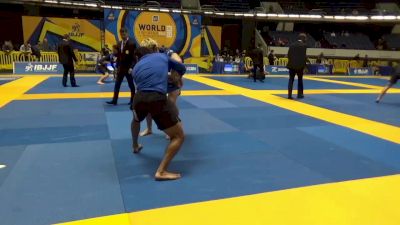 Luke Russel vs Erick Alexander Jarquin 2022 World IBJJF Jiu-Jitsu No-Gi Championship
Luke Russel vs Erick Alexander Jarquin 2022 World IBJJF Jiu-Jitsu No-Gi ChampionshipDec 8, 2022
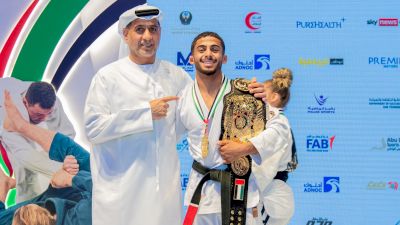 Andrew Shines, Pessanha Wins 4th, Al Katheeri Makes History At World Pro
Andrew Shines, Pessanha Wins 4th, Al Katheeri Makes History At World ProNov 21, 2022
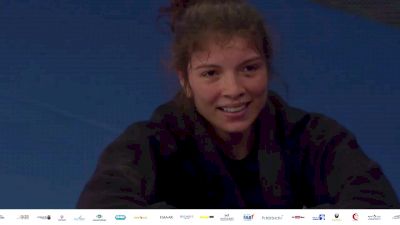 Replay: Finals - 2022 Abu Dhabi World Professional Jiu-Jitsu | Nov 19 @ 10 AM
Replay: Finals - 2022 Abu Dhabi World Professional Jiu-Jitsu | Nov 19 @ 10 AMNov 19, 2022
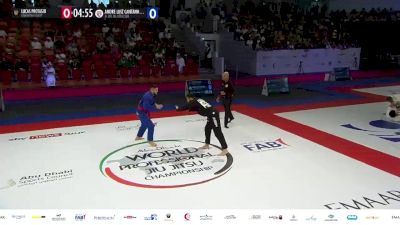 Replay: Mat 6 - 2022 Abu Dhabi World Professional Jiu-Jitsu | Nov 18 @ 10 AM
Replay: Mat 6 - 2022 Abu Dhabi World Professional Jiu-Jitsu | Nov 18 @ 10 AMNov 18, 2022
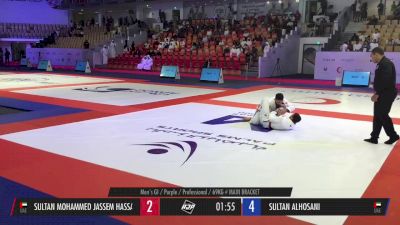 Replay: Mat 9 - 2022 Abu Dhabi World Professional Jiu-Jitsu | Nov 18 @ 5 PM
Replay: Mat 9 - 2022 Abu Dhabi World Professional Jiu-Jitsu | Nov 18 @ 5 PMNov 18, 2022
 Replay: Mat 9 - 2022 Abu Dhabi World Professional Jiu-Jitsu | Nov 18 @ 10 AM
Replay: Mat 9 - 2022 Abu Dhabi World Professional Jiu-Jitsu | Nov 18 @ 10 AMNov 18, 2022
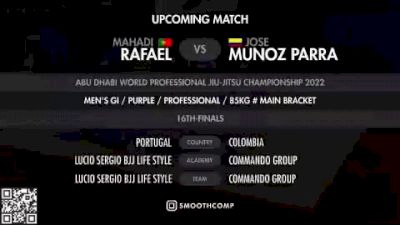 Replay: Mat 4 - 2022 Abu Dhabi World Professional Jiu-Jitsu | Nov 18 @ 10 AM
Replay: Mat 4 - 2022 Abu Dhabi World Professional Jiu-Jitsu | Nov 18 @ 10 AMNov 18, 2022
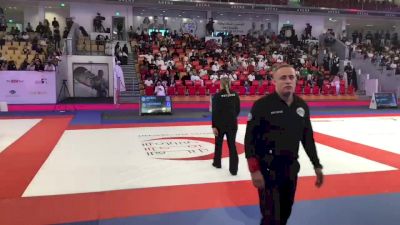 Replay: Mat 5 - 2022 Abu Dhabi World Professional Jiu-Jitsu | Nov 18 @ 10 AM
Replay: Mat 5 - 2022 Abu Dhabi World Professional Jiu-Jitsu | Nov 18 @ 10 AMNov 18, 2022
 Replay: Mat 2 - 2022 Abu Dhabi World Professional Jiu-Jitsu | Nov 18 @ 10 AM
Replay: Mat 2 - 2022 Abu Dhabi World Professional Jiu-Jitsu | Nov 18 @ 10 AMNov 18, 2022